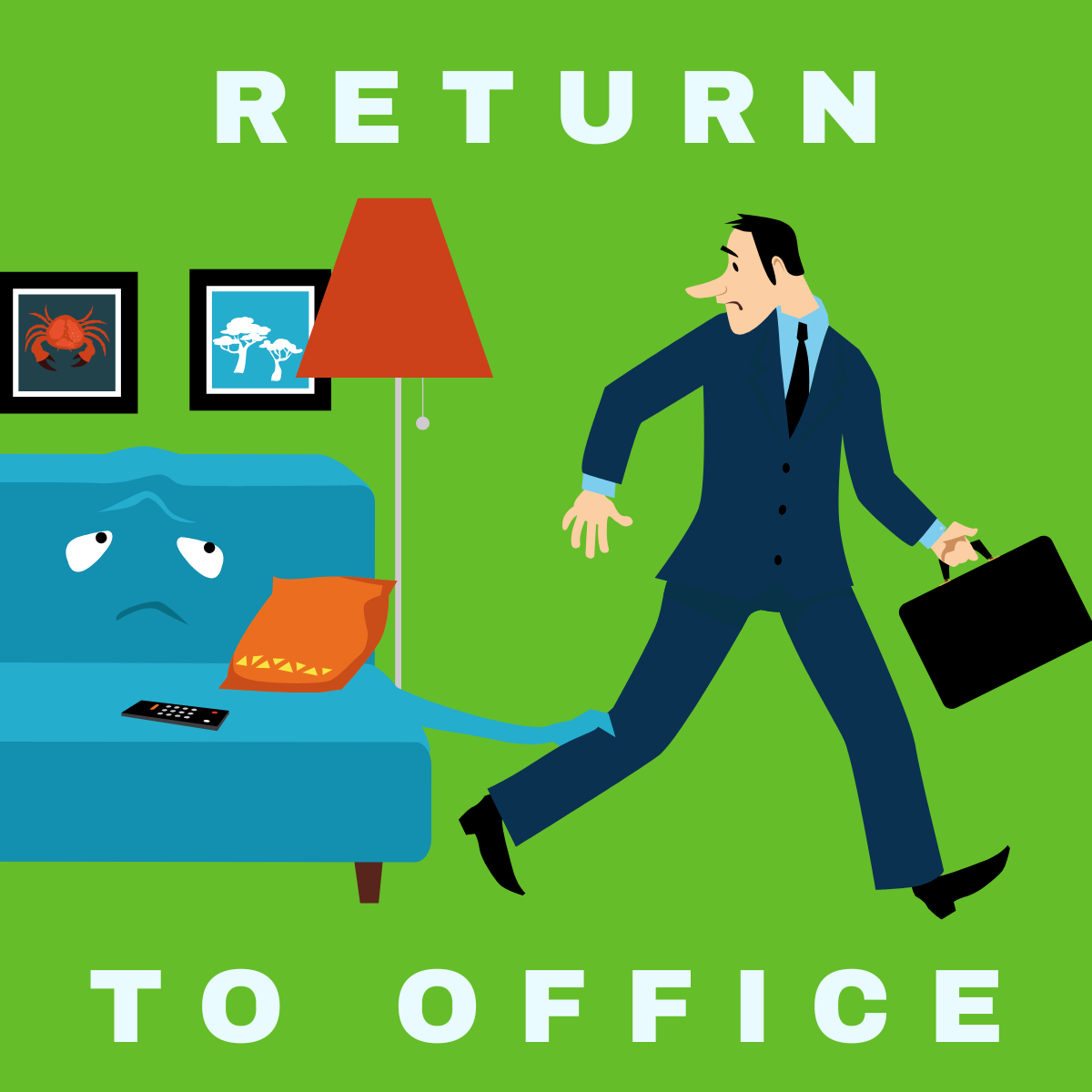Return to Office!
Nathan Wadding, The Kindling Agency
 Our lives, communities, homes, and families are built around the places we work. This is not a new phenomenon. It happened over 10,000 years ago when humans moved from hunter-gatherers to farmers.
Our lives, communities, homes, and families are built around the places we work. This is not a new phenomenon. It happened over 10,000 years ago when humans moved from hunter-gatherers to farmers.
The Agricultural Revolution led to people settling in communities and developing specialized roles, and our schedules were our own, beholden only to 1 thing: the sun. We then took another step towards conformity with the invention of the electric light and the Industrial Revolution. With the factory, we organized our lives in a uniform way with the place-based work setting. This was a huge shift for humans, but it allowed us to slip easily into the Knowledge Revolution. We were still functioning in a place-based work setting; some were now just going to offices, not factories.
And now, as we enter an entirely new Unnamed Work Revolution that is not necessarily place-based or time-based, it's challenging and disorienting because our lives, routines, mindsets, and organizational structure have historically been shaped by a place & time-based structure. And for most organizations and leaders, this has become the very crux of the return to office conversation, because we are talking about something much bigger: modernity and our legacy as a work-centered culture.
Should we Return to Office?
The thing is, we're getting part of this conversation wrong, and in the process, we're missing a great opportunity. RTO is a complex issue; most of the complexity does not come from "where an employee sits or stands" to do their work; it comes from the emotions we each feel around the topic. RTO doesn’t need to be a battle between leadership and employees, it has the opportunity to give your employees exactly what they are seeking.
I've had a lot of conversations with leaders. They want answers and insights, and all I have for them are new questions to begin to unlock the heart of the matter for their organization. (I'm a good consultant; what can I say?)
First, I ask them how they feel about return to office as a person, not a leader. It's critical for leaders to understand the difference.
Second, I ask them why they want people back in the office. I usually receive the same answers initially; however, when I press them a little harder about why it matters, by the 5th why, we get the most valuable insight, along with some annoyance at my persistence.
- Why 1 - We're paying for the office.
- Why 2 - We're more efficient and productive. We can be more agile.
- Why 3 - I like us all to be together in one place. It's easier to build culture.
- Why 4 - It's how we've always done work, and we're organized this way.
- Why 5 - Because it's easier for me.
All of the above are true to some degree, and change is hard, messy, and emotional. If you’ve heard Jamie Dimon’s viral recording, you can hear the emotion. Nothing he said was particularly wrong or bad for his organization; it’s the culture he wants, but his delivery was certainly driven by emotion and anger.
So we know what leaders want, but on the other side of this conversation are the employees and what they want. According to a recent McLean & Company Employee Engagement Trends Report.
The highest drivers for employees' day-to-day job motivation are:
- Coworker Relationships
- Manager Relationships
- Employee Empowerment
The highest drivers that influence employees' satisfaction and commitment to the organization are:
- Inclusion (A state in which all employees feel a sense of belonging.)
- Culture
- Company Potential (Does the company have a bright future?)
Your employees are telling you they want connection; but do you really need to return to office for that?
We don't always have to be in the same place working shoulder to shoulder to build stronger cultures. True culture is strengthened when we feel we are building something together and with purpose. And that has to start from the top down and the bottom up.
Regardless of whether you RTO, partially RTO, or work entirely remotely, depending on chance and a physical workplace to foster connections at work is undoubtedly the wrong approach. Decades ago, the water cooler, the smoker's bench, or the happy hour crew were common ways to establish connections, but they were never genuinely inclusive rituals. Moving forward, we can not depend on accidental rituals to create connections at work. It is time for intentional rituals that build connection. It’s time for fewer water cooler conversations and more campfire conversations where we can truly understand each other and build trust in meaningful ways. Conversations about the messy middle we all live in, what we're going through, where we came from, and how we're approaching the future.
Having deeper, more meaningful conversations is the way we build stronger relationships, better work cultures, and better organizations for all.
Learn more at sparksomethingbig.com.